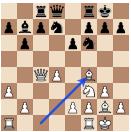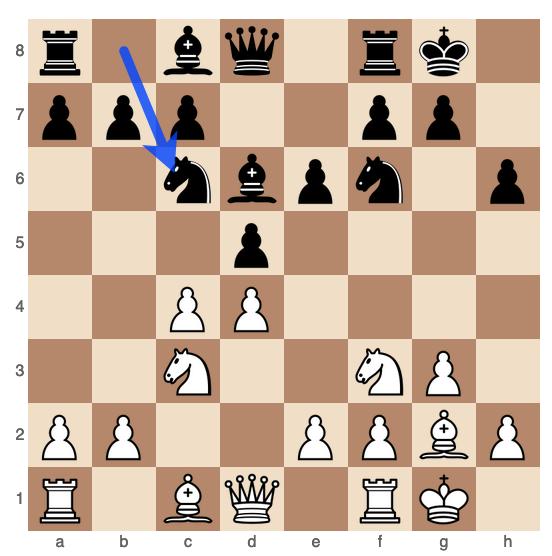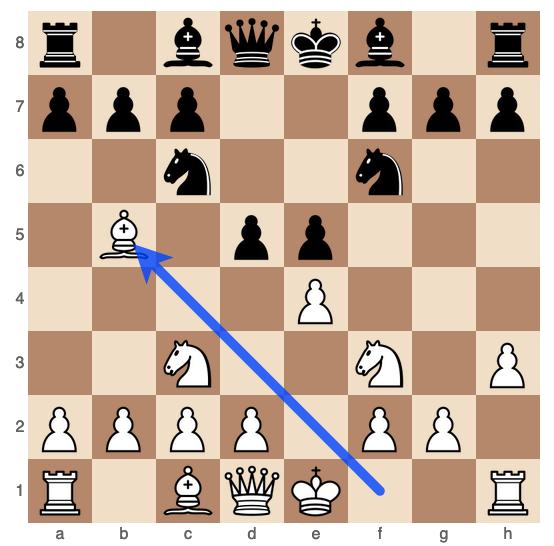In this highly instructive game from Titled Tuesday, Guillermo Baches (Chessllermo) demonstrates his strategic prowess and tenacity against a higher-rated opponent, Georgios Souleidis. The battle unfolds in the King’s Indian Defense, a complex and double-edged opening where both players aim for dynamic play. Baches, with the white pieces, gradually outplays his opponent, culminating in a powerful victory that showcases his understanding of the position and tactical alertness.
The Opening
The game begins with the King’s Indian Defense (1. d4 Nf6 2. c4 g6 3. Nc3 Bg7 4. e4 d6), a popular choice by Souleidis, known for its rich tactical possibilities and counterattacking chances. Baches adopts the Classical Variation with 5. Nf3 and 6. Be2, leading to a standard setup where both sides develop their pieces in anticipation of the central battle.
The tension rises with 7. Be3, where Baches aims for a solid structure, preparing to potentially push d4-d5 in the future. Souleidis responds aggressively with 7…Ng4, immediately challenging White’s central control and forcing White to react. After 8. Bg5 f6, the game takes on a sharper character as both sides start to engage in a complex struggle for the center.
The Middlegame
The middlegame begins to take shape after 10. d5 Ne7, where Baches closes the center, a typical thematic move in the King’s Indian. This decision sets the stage for a battle where Black will aim for kingside play while White will focus on the queenside and center.
Baches continues with 12. f3, reinforcing his central control and preparing to expand on the queenside. Souleidis counters with 12…c5, a standard break in the King’s Indian, challenging White’s pawn structure. The game remains balanced, but White’s space advantage and central pawns give Baches a slight edge.
The turning point comes with 14. b4, where Baches begins to undermine Black’s queenside structure. The strategic plan is clear: Baches intends to open the queenside while maintaining control of the center, effectively limiting Black’s counterplay on the kingside. After 17. exd5 Nxd5 18. Nxd5 Bxd5, the position simplifies somewhat, but Baches still holds the initiative due to better pawn structure and piece activity.
The Endgame
As the game transitions to the endgame, Baches’ positional advantage becomes more apparent. After 24. Nxc4, Baches recaptures on c4 with a strong knight, keeping the pressure on Black. The exchange sacrifice with 26. Rxe8+ Rxe8 27. Re1 was a critical moment, highlighting Baches’ deep understanding of the position. By giving up the exchange, Baches secures dominant central control and keeps Black’s king under pressure.
Souleidis tries to create counterplay with 28…Qxh2 and 30…h6, but Baches remains calm, focusing on activating his pieces and maintaining control. The final phase of the game, beginning with 31. Re7, shows Baches’ excellent endgame technique. He carefully maneuvers his pieces, bringing his king into the action and pushing his pawns to create decisive threats.
The game concludes with a beautifully coordinated attack by Baches, who uses his passed pawns and active pieces to completely tie down Black’s forces. After 47. Rb7, Black is unable to stop White’s advancing pawns, leading to Souleidis’ resignation.
Conclusion
This game is a masterclass in handling the King’s Indian Defense with White, showcasing how to neutralize Black’s typical counterplay while gradually increasing positional pressure. Baches’ understanding of the strategic themes, combined with his precise calculation and endgame skills, led to a well-earned victory against a strong opponent.
Key Lessons:
- In the King’s Indian Defense, controlling the center and carefully timing your pawn breaks are crucial to gaining an advantage.
- Exchange sacrifices, especially when they lead to improved central control or piece activity, can be powerful tools in the middlegame.
- Endgame technique is essential; maintaining calm under pressure and slowly improving your position often leads to victory.
“Chess is a game of inches—each small advantage, when nurtured, can grow into an overwhelming force.” Baches exemplified this principle by turning a complex middlegame into a dominant endgame win through strategic understanding and tactical precision.






